甲基丙烯酸四氢糠基酯 ,Tetrahydrofurfuryl methacrylate ,97%
产品编号:SIGMA-409456| CAS NO:2455-24-5| 分子式:C9H14O3| 分子量:170.2057
本网站销售的所有产品仅用于工业应用或者科学研究等非医疗目的,不可用于人类或动物的临床诊断或者治疗,非药用,非食用,
| 产品名称 | 甲基丙烯酸四氢糠基酯 |
|---|---|
| 英文名称 | Tetrahydrofurfuryl methacrylate |
| CAS编号 | 2455-24-5 |
| 产品沸点 | 265.0±0.0 °C at 760 mmHg |
| 产品密度 | 1.0±0.1 g/cm3 |
| 产品闪点 | 105.6±14.4 °C |
| 精确质量 | 170.094299 |
| PSA | 35.53000 |
| LogP | 1.38 |
| 外观性状 | 液体;Colorless to Almost colorless clear liquid |
| 蒸气压 | 0.0±0.5 mmHg at 25°C |
| 折射率 | 1.453 |
| 稳定性 | 常温常压下稳定,避免氧化物,光接触 |
| 储存条件 | 保持容器密封,放入紧密的出藏器内,储存在阴凉,干燥的地方 |
相关文档
化学品安全说明书(MSDS)
下载MSDS质检证书(COA)
相关产品
| 个人防护装备 | Eyeshields;Gloves;half-mask respirator (US);multi-purpose combination respirator cartridge (US) |
|---|---|
| 风险声明 (欧洲) | R10;R36/37/38 |
| 安全声明 (欧洲) | S36 |
| 危险品运输编码 | 3272 |
| WGK德国 | 1 |
| 包装等级 | III |
| 危险类别 | 3 |
| 海关编码 | 2932190090 |
|
Tetrahydrofurfuryl Methacrylate (stabilized with MEHQ) Revision number: 5
SAFETY DATA SHEET Section1. IDENTIFICATION Product name:Tetrahydrofurfuryl Methacrylate (stabilized with MEHQ) Revision number:5 Section2. HAZARDS IDENTIFICATION GHS classification PHYSICAL HAZARDSNot classified HEALTH HAZARDS Skin corrosion/irritationCategory 2 Category 2A Serious eye damage/eye irritation ENVIRONMENTAL HAZARDSNot classified GHS label elements, including precautionary statements Pictograms or hazard symbols Signal wordWarning Hazard statementsCauses skin irritation Causes serious eye irritation Precautionary statements: Wash hands thoroughly after handling. [Prevention] Wear protective gloves/eye protection/face protection. IF IN EYES: Rinse cautiously with water for several minutes. Remove contact lenses, [Response] if present and easy to do. Continue rinsing. If eye irritation persists: Get medical advice/attention. IF ON SKIN: Gently wash with plenty of soap and water. If skin irritation occurs: Get medical advice/attention. Take off contaminated clothing and wash before reuse. May cause polimerization. Other hazards which do not result in classification Section3. COMPOSITION/INFORMATION ON INGREDIENTS Substance/mixture:Substance Components:Tetrahydrofurfuryl Methacrylate (stabilized with MEHQ) Percent:>95.0%(GC) CAS Number:2455-24-5 Synonyms:Methacrylic Acid Tetrahydrofurfuryl Ester Chemical Formula:C9H14O3 MEHQ) Section4. FIRST AID MEASURES Inhalation:Remove victim to fresh air and keep at rest in a position comfortable for breathing. Get medical advice/attention if you feel unwell. Skin contact:Remove/Take off immediately all contaminated clothing. Gently wash with plenty of soap and water. If skin irritation or rash occurs: Get medical advice/attention. Eye contact:Rinse cautiously with water for several minutes. Remove contact lenses, if present and easy to do. Continue rinsing. If eye irritation persists: Get medical advice/attention. Ingestion:Get medical advice/attention if you feel unwell. Rinse mouth. A rescuer should wear personal protective equipment, such as rubber gloves and air- Protection of first-aiders: tight goggles. Section5. FIRE-FIGHTING MEASURES Suitable extinguishingDry chemical, foam, water spray, carbon dioxide. media: Unsuitable extinguishing Solid streams of water media: Specific hazards arising This substance may polimerize explosively when heated or involved in a fire. from the chemical:Container may explode when heated. Combat fire from a sheltered position. Precautions for firefighters: Fire-extinguishing work is done from the windward and the suitable fire-extinguishing method according to the surrounding situation is used. Uninvolved persons should evacuate to a safe place. In case of fire in the surroundings: Keep containers cool by spraying with water. Eliminate all ignition sources if safe to do so. Special protectiveWhen extinguishing fire, be sure to wear personal protective equipment. equipment for firefighters: Section6. ACCIDENTAL RELEASE MEASURES Personal precautions,Use personal protective equipment. Keep people away from and upwind of spill/leak. protective equipment and Ensure adequate ventilation. Entry to non-involved personnel should be controlled emergency procedures: around the leakage area by roping off, etc. Environmental precautions: Prevent product from entering drains. Methods and materials for Absorb spilled material in dry sand or inert absorbent before recovering it into a containment and cleaning covered container. In case of large amount of spillage, contain a spill by bunding. up: Adhered or collected material should be promptly disposed of, in accordance with appropriate laws and regulations. Section7. HANDLING AND STORAGE Precautions for safe handling Technical measures:Handling is performed in a well ventilated place. Wear suitable protective equipment. Prevent generation of vapour or mist. Wash hands and face thoroughly after handling. Use a ventilation, local exhaust if vapour or aerosol will be generated. Advice on safe handling: Avoid contact with skin, eyes and clothing. Conditions for safe storage, including any incompatibilities Keep container tightly closed. Store in a cool and dark place. Storage conditions: Store away from incompatible materials such as oxidizing agents. Light-sensitive Packaging material:Comply with laws. Section8. EXPOSURE CONTROLS / PERSONAL PROTECTION Engineering controls:Install a closed system or local exhaust as possible so that workers should not be exposed directly. Also install safety shower and eye bath. Personal protective equipment Respiratory protection: Vapor respirator. Follow local and national regulations. Protective gloves. Hand protection: MEHQ) Section8. EXPOSURE CONTROLS / PERSONAL PROTECTION Eye protection:Safety glasses. A face-shield, if the situation requires. Skin and body protection: Protective clothing. Protective boots, if the situation requires. Section9. PHYSICAL AND CHEMICAL PROPERTIES Physical state (20°C):Liquid Form:Clear Colour:Colorless - Very pale yellow Odour:No data available pH: No data available Melting point/freezing point:No data available Boiling point/range:85°C/0.5kPa Flash point:96°C Flammability or explosive limits: Lower:No data available Upper:No data available Relative density:1.04 Solubility(ies): [Water]No data available [Other solvents]No data available Section10. STABILITY AND REACTIVITY Chemical stability:Polymerization may occur under the influences of heat, light or on contact with polymelization initiators such as peroxides etc. Possibility of hazardous No special reactivity has been reported. reactions: Conditions to avoid:Heat, Light Incompatible materials: Oxidizing agents, Reducing agents Hazardous decomposition Carbon monoxide, Carbon dioxide products: Section11. TOXICOLOGICAL INFORMATION Acute Toxicity:No data available Skin corrosion/irritation: No data available Serious eyeNo data available damage/irritation: Germ cell mutagenicity: No data available Carcinogenicity: IARC =No data available NTP =No data available Reproductive toxicity:No data available Section12. ECOLOGICAL INFORMATION Ecotoxicity: No data available Fish: Crustacea:No data available No data available Algae: Persistence / degradability: No data available No data available Bioaccumulative potential(BCF): Mobility in soil Log Pow:No data available No data available Soil adsorption (Koc): Henry's LawNo data available constant(PaM3/mol): MEHQ) Section13. DISPOSAL CONSIDERATIONS Recycle to process, if possible. Consult your local regional authorities. You may be able to burn in a chemical incinerator equipped with an afterburner and scrubber system. Observe all federal, state and local regulations when disposing of the substance. Section14. TRANSPORT INFORMATION Hazards Class:Does not correspond to the classification standard of the United Nations Not listed UN-No: Section15. REGULATORY INFORMATION Safe management ordinance of dangerous chemical product (State Council announces on January 26, 2002 and revised on February 16,2011): Safe use and production, the storage of a dangerous chemical, transport, loading and unloading were prescribed. SECTION 16 - ADDITIONAL INFORMATION N/A |
|
~% 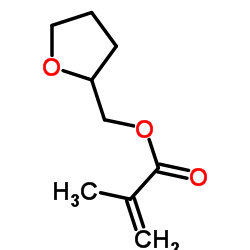
2455-24-5 |
| 文献:US2129666 , ; |
|
~% 
2455-24-5 |
| 文献:Journal of Organic Chemistry, , vol. 14, p. 1094,1095, 1097 |


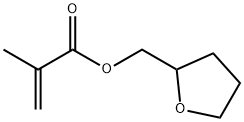

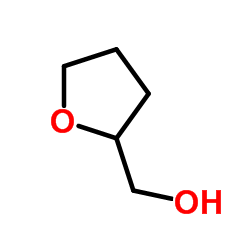
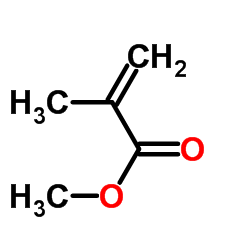
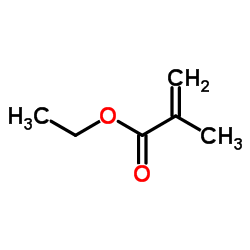





 浙公网安备 33010802013016号
浙公网安备 33010802013016号